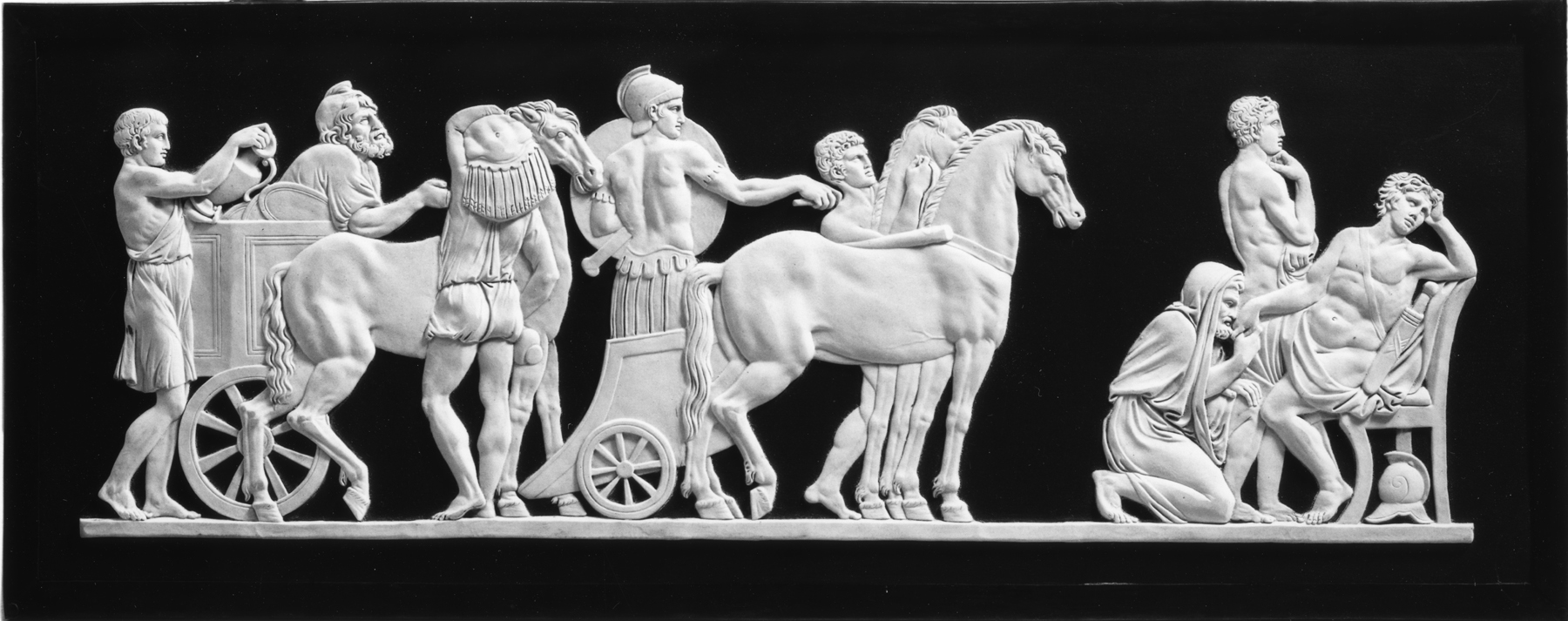Priam Kneeling Before Achilles, Begging for the Body of His Son Hector
(18th and 19th Centuries )
This plaque or tablet shows a scene from the Iliad. The figures are executed in white on a black ground, and the plaque is housed in a metal frame with two rings for hanging. To the right is Priam, the King of Troy, who is begging the Greek leader Achilles (seated) for the body of his son, Hector. Automedontes, Achilles' shield-bearer, stands behind to these figures with his hand to his chin. To the left of the composition is a cart carrying gifts to Achilles, and to the right of this is Hector's chariot. The composition is adapted from the so-called sarcophagus of Alexander Severus and Julia Mammaea in the Capitoline Museum, Rome. It was modelled by Camillo Pacetti in wax. Pacetti received payment from Wedgwood for this work on 10 May 1788. Achilles is the subject of many Wedgwood cameos, medallions and tablets. These include a series of six reliefs depicting scenes from the hero's life, of which this example forms the final part.
Inscription
Provenance
Provenance (from the French provenir, 'to come from/forth') is the chronology of the ownership, custody, or location of a historical object. Learn more about provenance at the Walters.
Collection of Horace Townsend, until 1914; Sale, American Art Association, New York, 1914 [Beautiful Old Wedgwood Including the Famous Hargreaves Collection of Wedgwood Medallions, Lot 340]; Henry Walters, Baltimore, 1914, by purchase; Walters Art Museum, 1931, by bequest.
Geographies
United Kingdom, England, Etruria, Staffordshire (Place of Origin)
Measurements
H: 7 1/16 x W: 19 7/8 in. (18 x 50.5 cm)
Credit Line
Acquired by Henry Walters, 1914
Location in Museum
Not on view
Accession Number
In libraries, galleries, museums, and archives, an accession number is a unique identifier assigned to each object in the collection.
In libraries, galleries, museums, and archives, an accession number is a unique identifier assigned to each object in the collection.
48.873


